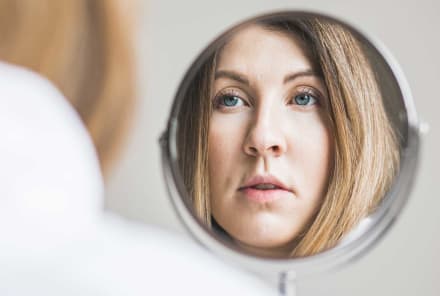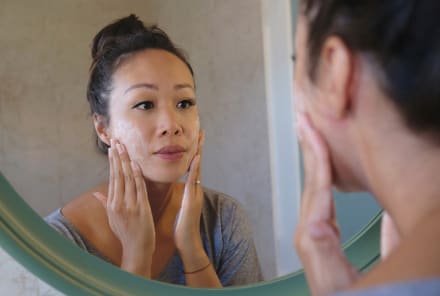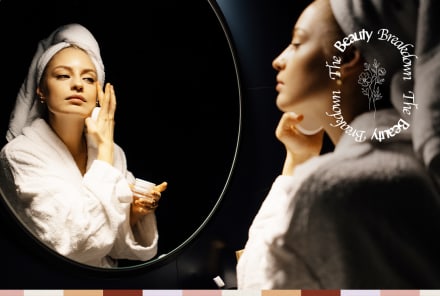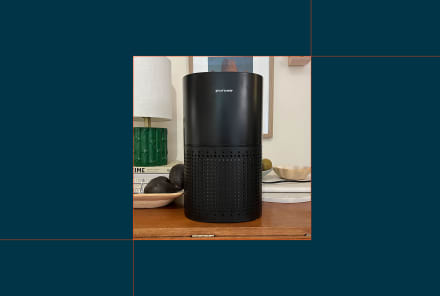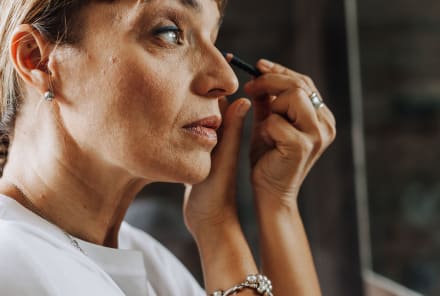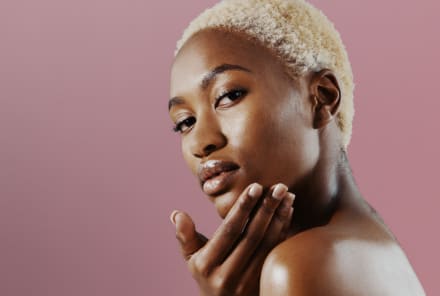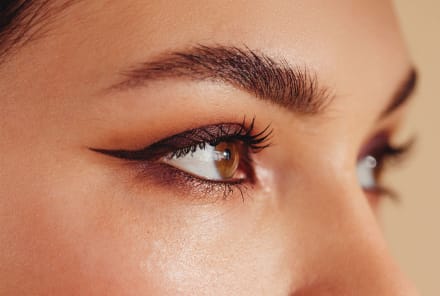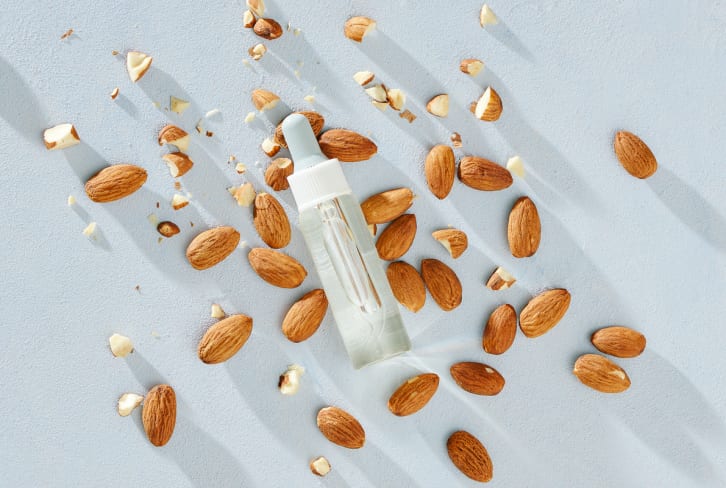Advertisement
Does Sunscreen Prevent Tanning? + How To Tan Responsibly

Everyone's skin care routine is different. Some people opt for goal-specific ingredients, while others like to keep it simple. Regardless of your product lineup, there's one step that should be universal: applying sunscreen.
We'll admit, sun care can be a bit confusing. Ever wondered how sunscreen even works? Not sure how much to apply? Or a very important question for those chasing a bronzy glow: Does sunscreen prevent tanning? Well, we've consulted the experts to get you these answers and more so you can master this crucial step in your routine. Let's get into it.
How does sunscreen work?
If you've ever wondered, "How does sunscreen even work?" you're not alone. We asked clean cosmetic chemist Krupa Koestline and board-certified dermatologist Rebecca Marcus, M.D., to explain.
"UV rays signal the skin to increase transcription of the tyrosinase gene," Koestline said. Tyrosinase is responsible for the first step in melanin production.
"Sunscreen works by reducing and limiting the signal to reduce tyrosinase production," she explained. Translation: Sunscreen increases the amount of UV radiation needed to create sun damage on the skin.
However, there is a difference between the mechanisms behind mineral and chemical formulas. "Chemical sunscreens work by absorbing UV radiation and catalyzing a chemical reaction that transforms these rays into heat, which is then released from the skin," Marcus explained.
On the flip side, mineral sunscreens create a sun-blocking barrier. "Physical sunscreens physically block UV radiation from reaching the skin by deflecting UV rays," she continued.
At the moment, zinc oxide and titanium dioxide (common ingredients in mineral SPF) are the only two ingredients the Environmental Working Group has deemed safe for use and effective at protecting the skin from UV damage.
If you want to learn more, we've covered the difference between mineral and chemical sunscreen before.
mbg beauty POV
Does sunscreen prevent tanning?
Unfortunately, this answer isn't so simple. Technically, you can still tan with sunscreen on. How tan, however, depends on many things: how easily you tan, what level of SPF you're wearing, what the UV index is at the time of sun exposure, etc.
"SPF refers to 'sun protection factor' and is a measure of the amount of solar radiation required to produce a burn on protected skin versus the amount required to produce a burn on nonprotected skin," Marcus explained. "So, it is still possible to tan or burn with sunscreen on, but it takes a larger dose of UV radiation to do so."
Here's the thing: Most people are not wearing the correct amount of sunscreen, nor reapplying often enough to achieve the SPF level stated on their bottle. So yes—some UV rays will still get through, and if you tan easily, you may still get a tan even with sunscreen on.
Can you tan responsibly?
Let's be frank, "There is no such thing as a safe tan," board-certified dermatologist and YouTube creator Andrea Suarez, M.D., FAAD, told mbg. "Tanning is an injury response to UV rays from the sun. The same rays that tan the skin also lead to permanent skin injury, premature skin aging, and increased skin cancer risk."
While lounging under the rays may feel nice and result in a bronzy glow for some, what's happening behind the scenes is not so pretty. That being said, you don't have to kiss goodbye your sun-kissed glow. Enter, sunless tanning products.
Self-tanners are getting better and better these days, especially the clean options. This means it is possible to achieve a natural-looking, long-lasting, and streak-free tan without the sun damage. Want to invest in safe tanning? Here's a comprehensive list of some of our favorite natural tanners that will have you bronzed in no time—and how to apply them.
Does sunscreen prevent the synthesis of vitamin D?
If you've ever been hesitant to lather on SPF for fear that you won't absorb vitamin D, we hear you. It's a common concern, but here are the facts: Despite being called the "sunshine" vitamin, it's actually quite hard to get a sufficient amount of vitamin D from the sun. That's because various factors, like skin tone, time of year, your age, and more, can influence how well your body is absorbing that vitamin D. (We've done a deeper dive on those reasons here, if you're curious). All that to say, you should not avoid sunscreen for this reason.
In fact, researchers recommend taking a multipronged approach to vitamin D 1intake, including high-quality supplementation, consumption of fortified foods, and smart sun exposure (which includes SPF). Suarez explains further, "Because sunscreen does not block 100% of UV rays, some UVB does get through, and this is enough to allow for some vitamin D production." The same circumstances that come with sunscreen tanning are true here: so you should be applying (and reapplying) often to protect your skin.
All that being said—if you have a deficiency or insufficiency of vitamin D, like 29% and 41% of Americans respectively do2, you may want to consider taking a high-quality vitamin D supplement (here's a list of our absolute favorites).
How to make sure you've applied enough SPF.
Here, a quick way to make sure you're applying enough sunscreen:
- For face: When applying face sunscreen, there's a quick way to make sure you're getting enough. Simply run the sunscreen along the inside of your pointer and middle finger. Once your two fingers have a strip of SPF on them, you're good to go. Be sure to cover your entire face and neck for ultimate protection.
- For body: For body sunscreen, you should fill up a shot glass full of sunscreen and apply it anywhere that will see the sun. Some areas like the back of the hands, tops of the feet, and tops of the ears are often forgotten, so be sure to lather those spots up too.
- For scalp: Don't worry, we're not going to say you need to apply greasy SPF to your roots. There are tons of products on the market geared specifically toward scalp protection. You'll want to spray on or rub in your scalp SPF and reapply every two hours to avoid a scalp burn—ouch! Here's a list of some of our go-to products for shielding the scalp.
The takeaway.
That was a lot, so let's review. You can still get a suntan while wearing sunscreen, though proper application will prevent most of the UV rays from penetrating the skin, thus preventing a tan. You can still absorb vitamin D even if you're wearing sunscreen, but those with a deficiency should consider supplementing to meet adequate levels.
At the end of the day, a tan is actually just sun damage. If you want a bronzy glow, opt for natural self-tanners instead. When applying SPF, use a shot glass worth on your body, two finger lengths on your face, and don't forget about the scalp. There's a lot that goes into practicing safe sun, so here's a breakdown of all things sun care if you want to learn more.
Watch Next
Enjoy some of our favorite clips from classes
Enjoy some of our favorite clips from classes
What Is Meditation?
Mindfulness/Spirituality | Light Watkins
Box Breathing
Mindfulness/Spirituality | Gwen Dittmar
What Breathwork Can Address
Mindfulness/Spirituality | Gwen Dittmar
The 8 Limbs of Yoga - What is Asana?
Yoga | Caley Alyssa
Two Standing Postures to Open Up Tight Hips
Yoga | Caley Alyssa
How Plants Can Optimize Athletic Performance
Nutrition | Rich Roll
What to Eat Before a Workout
Nutrition | Rich Roll
How Ayurveda Helps Us Navigate Modern Life
Nutrition | Sahara Rose
Messages About Love & Relationships
Love & Relationships | Esther Perel
Love Languages
Love & Relationships | Esther Perel
